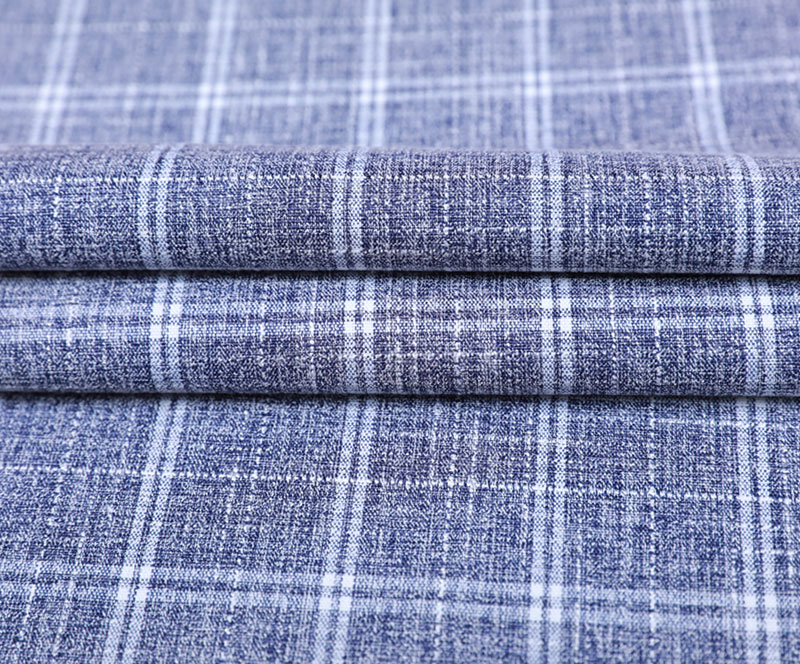

Which is better, milk silk or nylon? Generally, […]
Which is better, milk silk or nylon? Generally, milk silk is better used for underwear, and clothes worn out of nylon are common materials.
Milk shreds products contain as many as 17 kinds of amino acids. Wearing close-fitting has the effect of moisturizing the skin, nourishing the skin, and moisturizing the skin. At the same time, the milk shreds also has a natural and long-lasting antibacterial function. According to the Shanghai Municipal Health and Epidemic Prevention Station, its antibacterial rate is over 80%. , Molds have inhibitory effects. The fabric woven with milk silk is light, soft, smooth, and draped. It is breathable, moisture-conducting and cool. Because milk silk has higher strength than cotton yarn (high count) and silk, it is resistant to moth and mildew, so it is more durable, washable and easy to store.
The special properties of milk protein fiber show true, magnificent and long-lasting colors on fabrics and clothing. The affinity with dyes makes the colors particularly bright and vivid. As long as they are washed under suitable conditions, the colors can still be washed even after repeated washings. Bright as new. What's more peculiar is that milk protein fiber is not as prone to mold or aging as other animal protein fibers, such as wool and silk, and it can remain bright as new even if it is left for several years. This means it is convenient to wear and easy to take care of.
When people sell clothes, they usually write fabric ingredients on the clothes label. Generally, what is the content of cotton, how much nylon, and how much polyester, but most of the time, nylon is not known what material it is and what its characteristics are. The following article can Explain these issues for everyone. Nylon is commonly referred to as nylon fiber. It is made by drawing nylon material into very fine fibers and then weaving it. The specific scientific name of nylon is polyamide, which is a widely used engineering plastic. According to different nylon materials, nylon 6 and nylon 66 are common, that is, fibers made of nylon 6 and nylon 66.
(1) The characteristics of nylon fiber fabrics Nylon fabrics are known for their excellent wear resistance. It is not only the best choice for down jackets and mountaineering clothes, but also is often blended or interwoven with other fibers to improve the strength and fastness of the fabric. . The characteristics of nylon fiber fabrics can be summarized as follows:
1. The wear resistance of nylon fabric ranks first among all kinds of fabrics, many times higher than other fiber fabrics of similar products, so its durability is extremely good.
2. The hygroscopicity of nylon fabric is a better variety among synthetic fiber fabrics, so clothes made of nylon are more comfortable to wear than polyester garments.
3. Nylon fabric is a light fabric, which is only listed after polypropylene and acrylic fabrics in synthetic fiber fabrics. Therefore, it is suitable for making mountaineering clothes and winter clothing.
4. Nylon fabric has excellent elasticity and elastic recovery, but it is easy to deform under a small external force, so its fabric is easy to wrinkle during wearing.
5. Nylon fabrics are poor in heat resistance and light resistance. Pay attention to the washing and maintenance conditions during wearing and use to avoid damage to the fabric.
(2) Varieties of nylon fiber fabrics Nylon fiber fabrics can be divided into three categories: pure spinning, blended spinning and interwoven fabrics. Each category contains many varieties, which are briefly introduced below.
1. Nylon pure textiles Various fabrics woven from nylon silk, such as nylon taffeta, nylon crepe, etc. Because it is woven with nylon filament, it has the characteristics of smooth hand feeling, firmness and durability, and moderate price. It also has the shortcomings that the fabric is easy to wrinkle and is not easy to recover. Nylon taffeta is mostly used for light clothing, down jackets or raincoat cloth, while nylon crepe is suitable for summer dresses, spring and autumn sweaters.
2. Nylon blended and interwoven fabrics The fabrics obtained by blending or interlacing nylon filaments or short fibers with other fibers have the characteristics and strengths of each fiber. Such as viscose/nylon gabardine, which is made of 15% nylon and 85% viscose blended into yarn. It has the warp density twice as large as the weft density, the thick texture, toughness and durability. The disadvantage is poor elasticity and easy Wrinkles, decreased wet strength, and sag when worn. In addition, there are sticky/jinfanliding, sticky/brocade/wool tweed and other varieties, which are some common fabrics.
https://www.hzmengda.com
